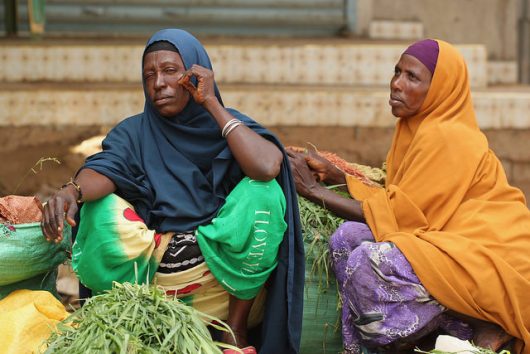Top 10 Facts About Hunger in Kenya

Kenya is a country in North East Africa (also known as the Horn of Africa) located on the Indian Ocean coastline. The countries in the Horn of Africa have been frequently hit by droughts that lasted for decades. As a result of this, Kenya suffered and still suffers from extreme food shortages that lead to illnesses and in many cases to death. To understand Kenya’s struggles and progress, below are the top 10 facts about hunger in Kenya.
Top 10 Facts about Hunger in Kenya
- Kenya has a population of 46 million people. Of this number, 25 percent or 11.5 million people live in underdeveloped housing and suffer from a variety of harmful living conditions such as food insecurity and diseases. The people who are most vulnerable to food scarcity live in dry areas, which is about 80 percent of the land.
- The number one cause of death of children under five years old is malnutrition. According to the World Food Programme, 337,000 children under five years old suffer from malnutrition.
- Twenty-five percent of children in Kenya suffer from stunted growth due to poor nutrition.
- Food scarcity is nothing new to East Africa. According to World Vision, poor climate and instability are the main causes of East Africa’s hunger. Droughts are extremely common and affect food-production, which leads to malnutrition.
- Instability is a consequence of years of political and social conflicts that make prices and food affected. Climate Change News states that due to political opposition and a lack of tools to run a government smoothly, the annual food inflation in Kenya increased 18.6 percent in 2017.
- Between July 2011 and mid-2012, East Africa experienced a drought that was known as the worst in 60 years, leaving 13 million people affected with a severe food crisis in Ethiopia, Somalia and Kenya. Hundreds of thousands of Somali people escaped to Kenya and Ethiopia to seek food and shelter. This has put more stress on Kenya and Ethiopia as the two already crowded countries. Huffington Post reported that the overall death rate is about seven out of 10,000 people a day while the average crisis rate is usually two person per day.
- Fortunately, the number of people in Kenya affected by food insecurity has improved from 3.4 million in 2017 to 2.6 million in 2018. This significant improvement is a direct result of more rain and living necessities supplied to the people in need.
- While there are millions of people in Kenya that are still in need of help, health and nutrition services have been extended out to two million people.
- During droughts, food prices escalate. In Kenya, maize prices rose 30 percent. However, people are still able to purchase this life staple due to increased imports from Uganda.
- Africa has the most people living in extreme poverty and facing food shortages. Food shortages are so severe that many children cannot go to school because schools are forced to close. According to Save the Children organization, only 30 percent of boys and 20 percent of girls are enrolled in school during droughts, and only a few complete their education. In addition, 4.7 million children across East Africa are at risk of dropping out of school due to the drought’s impact. The Kenyan government promised to donate money for food aid but has only given 4,000 bags of maize that can last only for a week.
Food is a necessity to live but in Kenya food almost seems like a privilege since so many obstacles need to be faced in order to feed a family. Besides food shortages, Kenyans have to deal with a horrendous climate and an unstable government which creates a cycle of unfortunate events.
These top 10 facts about hunger in Kenya give an idea of the struggles these people have to face. Fortunately, Kenya continues to lift itself up out of poverty with the help from surrounding countries.
– Kristen Uedoi
Photo: Flickr
